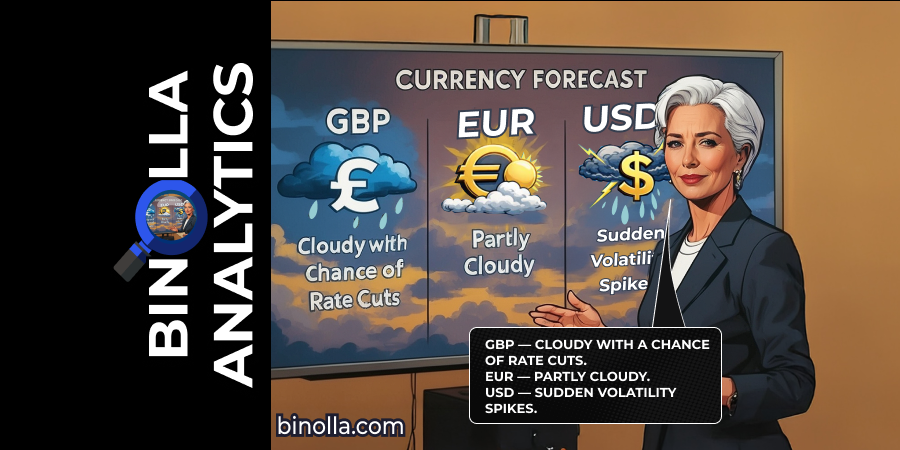Trump Tariffs and US Inflation: The Two Key Drivers to Consider This Week
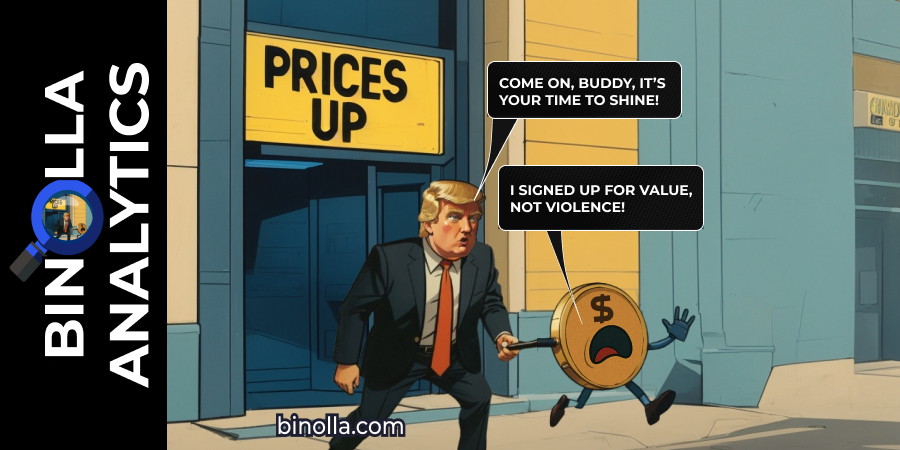
Import tariffs by the White House are among the most discussed topics nowadays. The US president has already announced them last week. The basic tariff for all countries is 10%. However, Donald Trump announced reciprocal tariffs as well, which means that the taxes will be higher for most countries.
According to his comments, calculations were made to erase the imbalance in trade relations between the US and the key partners. The new tariffs have already led to a significant fall in financial markets. Traders and investors run from risky assets to safe haven. Moreover, the US dollar plunged on fears of a recession in the United States. According to market expectations, the Fed may conduct 5 interest rate cuts instead of the 2 that were forecasted previously.
Another important data release this week is the inflation in the US. Yearly CPI is expected to slow down and reach 2.6% only, while monthly core inflation is likely to accelerate and reach 0.3% against 0.2% in February.
Contents
EUR/USD: The Currency Pair Struggle to Recover
The initial market reaction to Trump’s Tariffs was to sell off the US dollar as traders and investors were concerned about the recession in the United States. However, currently, they also asses the impact of tariffs on European economies. Finance ministers of all EU countries are scheduled for a meeting on Friday to speak about the current situation and how to overcome the possible damage from US trade tariffs. Moreover, Eurozone officials have already mentioned that they will respond to any trade limitations coming from the United States.
Anyway, now the markets assess whether the Fed is going to cut rates five times this year. On the ECB front, traders and investors expect the central bank to cut rates in the upcoming meeting. However, it is still unclear whether the officials will make further dovish steps this year. The euro remains under pressure in this situation as fears of global recession decrease the demand for risky assets.

From a technical analysis perspective, EUR/USD is trading below the simple moving average 50, which underslines the domination of sellers at the moment. Given the market context, the currency pair is likely to break below the support level at 1.0910 and move lower, targeting 1.0870 and 1,0800. Therefore, selling from 1.0910 is preferable.
On the upside, if EUR/USD manages to break above the SMA50, which is a dynamic resistance level, the next target will be at 1.1000. Buying positions from this level are preferable.
GBP/USD: The Pound Sterling Benefits from Fed Dovish Bets
The intense sell-off that lasted for two days has come to an end as fears of more rate cuts by the Fed have stopped the US dollar uptrend. According to the latest forecasts, the Fed is likely to make five rate cuts totaling 125 bps, compared to previous 50 bps expectations by the financial markets.
On the Sterling front, the Bank of England is likely to resume its rate cut policy as well. Tariffs imposed by the United States may put pressure on the UK economy in the near future. However, a possibility of higher inflation may prevent the central bank from taking more aggressive, dovish steps.
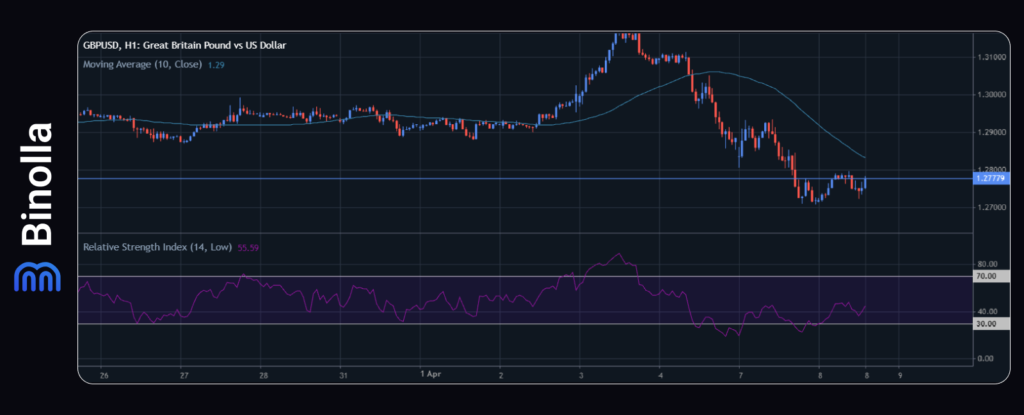
From the technical perspective, the British pound is trying to make some gains, but these attempts fail all the time due to higher interest in safe-haven assets. The price fluctuates below the SMA50, which is a dynamic resistance that prevents the currency pair from moving higher. On the downside, opening short positions will be preferable if GBP/USD moves below 1.2710-1.2700. On the upside, if the price jumps above 1.2830, traders can buy it, targeting 1.2900-1.3000.
WTI: Oil is Losing Ground Amid Fears of Global Recession and Higher Supply
The upside potential in WTI seems limited due to fears of the global recession. Trade wars between the US and their counterparts may lead to lower demand for oil in the upcoming months. China, one of the biggest consumers of oil, is under a specific scope as any signs of a recession in this country may create additional pressure on oil quotes.
Additionally, a surprise decision by the OPEC+ to increase supply exerted pressure on WTI. The last meeting ended with the cartel to raise output by 441,000 barrels in May, which may lead to oversupply. Any gains in oil prices are currently capped by the current market sentiment and context and can be considered an upside correction to the global downtrend.
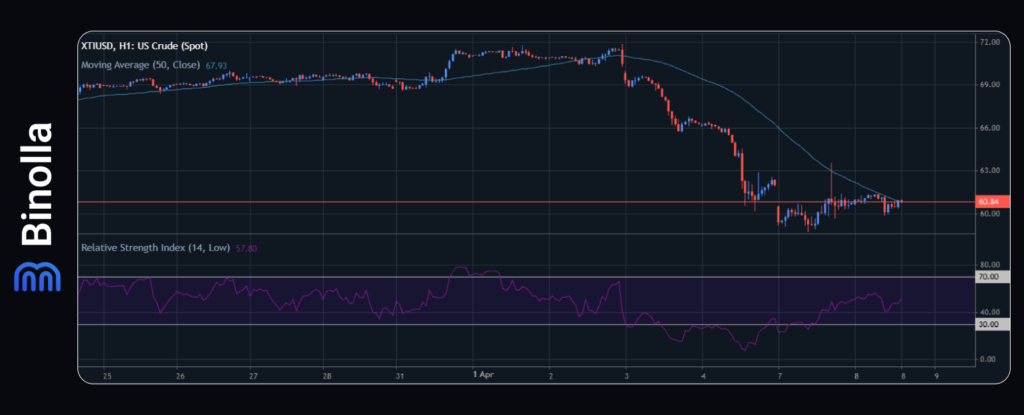
From the technical analysis perspective, WTI is trading below the SMA50, which means that bears are still controlling the situation. Selling pressure will increase below 59.00, which means that short positions from there are preferable. When it comes to the upside, traders can buy above 61,00, which acts as a local resistance level.
XAU/USD: Gold Recovers Above 3,000
The precious metal gains support as the markets switch to the risk-off mode. The latest news on tariffs and a new cycle of trade wars may bring gold even higher to its record highs above 3,100. Moreover, the uptrend can be supported by the US dollar downtrend as the currency struggles to recover due to fears of US recession.
According to the US Treasury Secretary, over 70 countries have already entered into contact with the United States and started negotiations on trade tariffs. News on any pause related to tariffs was nothing more than a mistake, which means that the taxes will be implemented as announced by the White House administration.
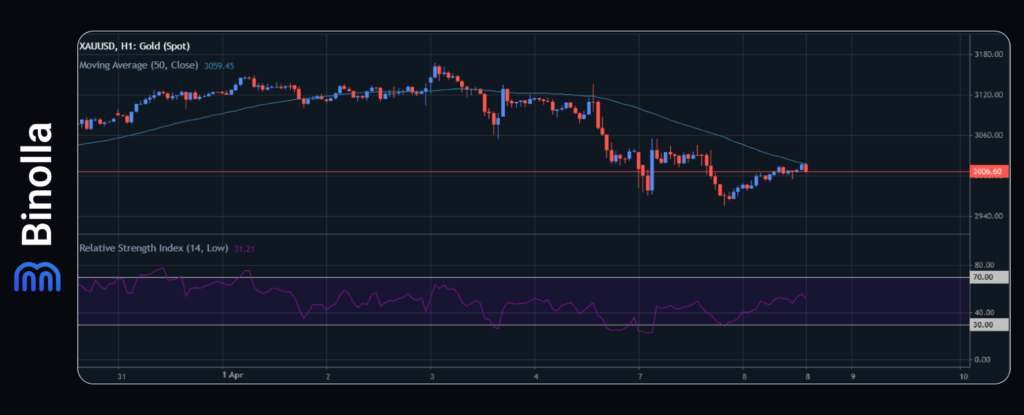
From the technical analysis perspective, Gold is testing the SMA50, which means that buyers are looking to retake control over the market. The upside is preferable currently due to the market context. Buying is recommended above 3030. When it comes to selling, traders can go short below 3000.

